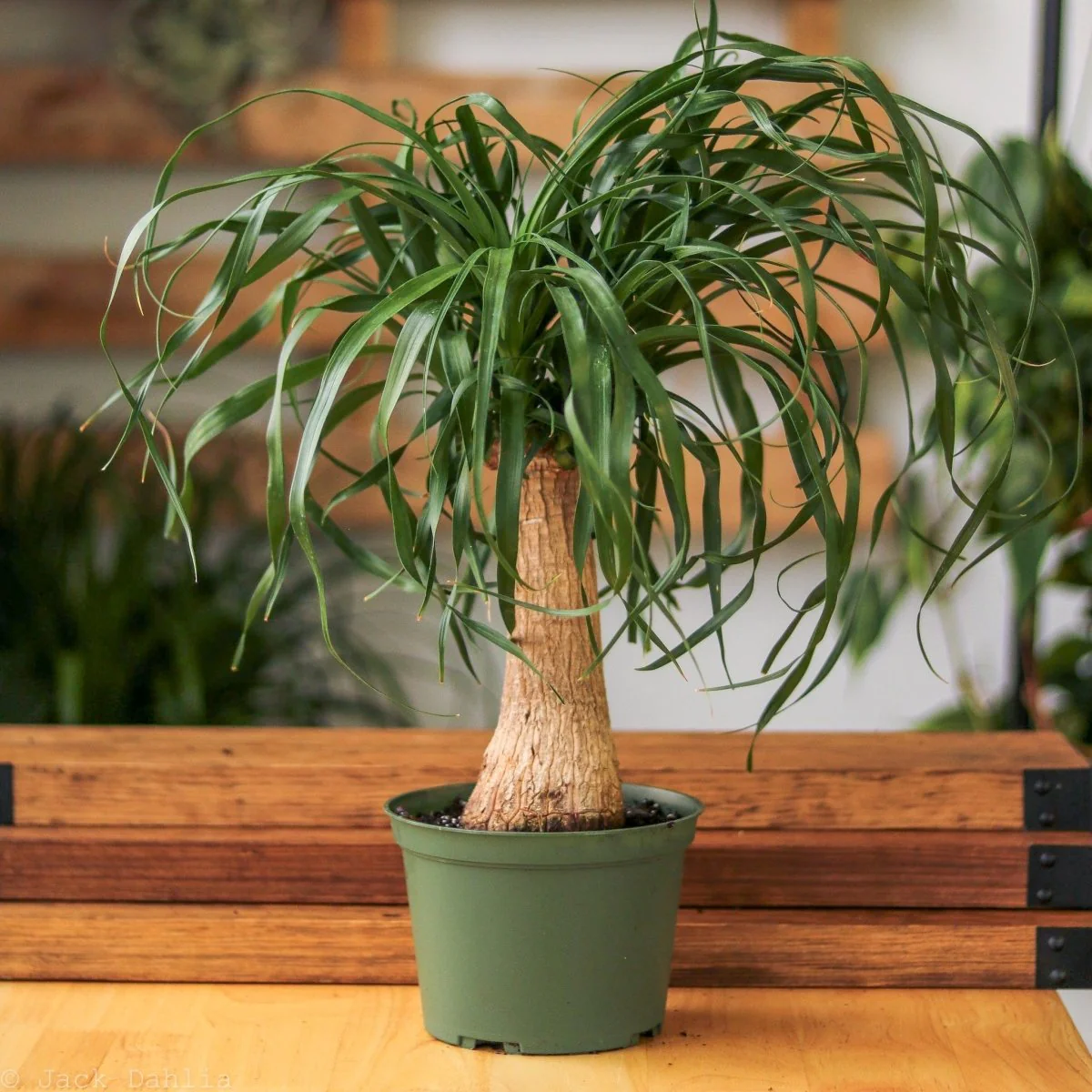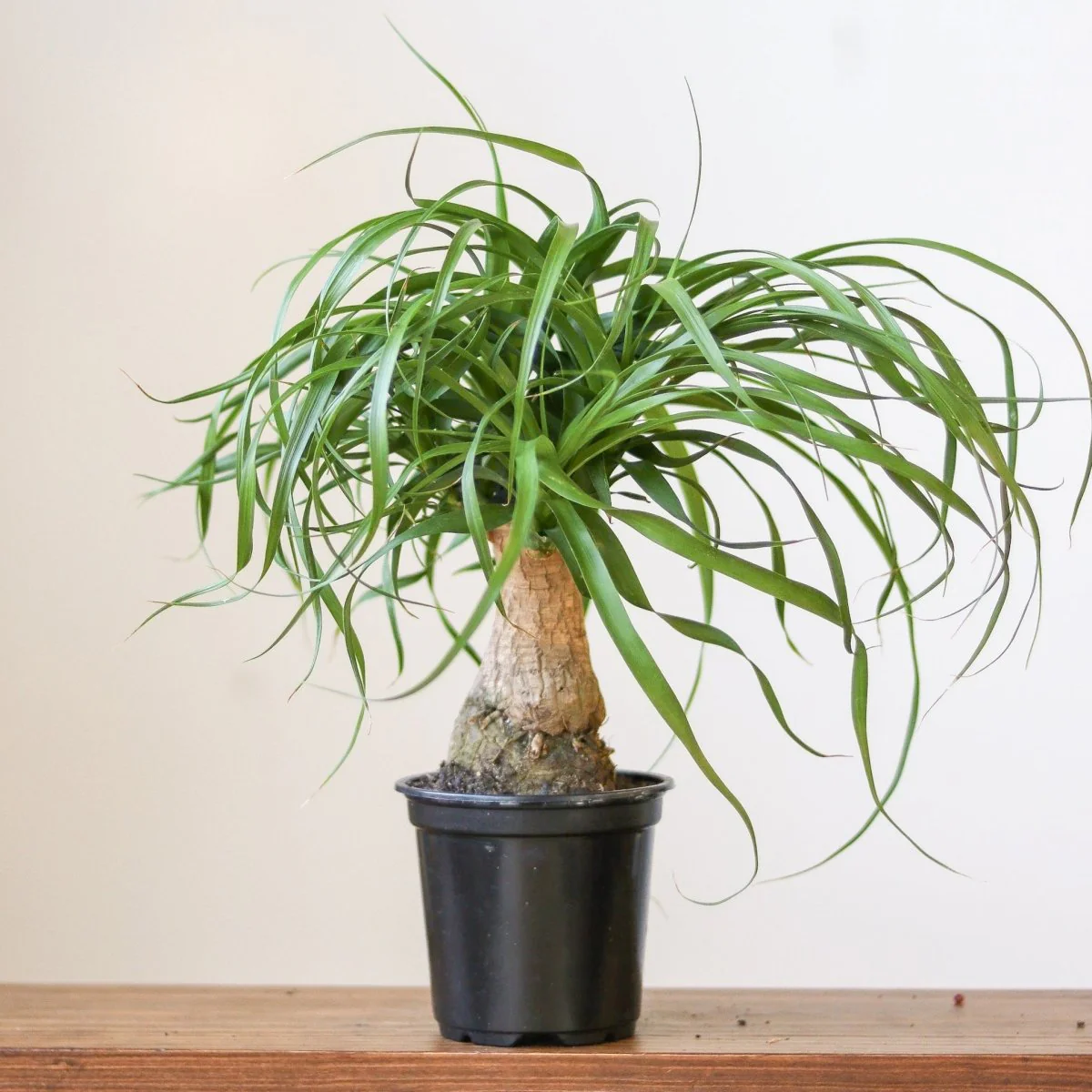-
Detail
Ponytail Palm - Unique and Low Maintenance
The Ponytail Palm is a fun and easy-to-care-for houseplant that’s perfect for both novice and seasoned plant enthusiasts. This evergreen, native to eastern Mexico, is a slow grower, making it ideal for compact spaces. It thrives in conditions similar to succulents, needing bright, indirect light and minimal water. Its distinctive trunk and cascading leaves add a touch of desert elegance to any home.
Ideal Plant for Small Spaces
If you’re limited on space, the Ponytail Palm is a great option. Its slow growth ensures it won’t outgrow its surroundings, and its low maintenance needs mean it’s a forgiving choice for busy plant lovers.
Looking for a larger Ponytail Palm?
Do you have a larger space that you'd like to place a Ponytail Palm? Check out our selection of floor plants, sure to fill that void in your home that is calling out for a plant!
Plant Profile
- Botanical Name: Beaucarnea recurvata
- Common Name: Ponytail Palm, Elephants Foot
- Family: Asparagus
- Native Range: Eastern Mexico
How to Care for Ponytail Palm
- Light: Bright, indirect light. Provide several hours of light per day.
- Water: Let the soil dry out completely in between waterings — watering once every 2-3 weeks. depending on the conditions of your home.
- Humidity: Average
- Temperature: 65-80 Fahrenheit. Avoid cold drafts and temps below 60 .
- Pruning: Prune as needed to remove brown or dead leaves and control growth.
- Feeding: Typically not needed, but if fertilizing, use a general houseplant fertilizer and fertilize in spring or summer.
- Propagation: Root division
- Pests: Watch out for mealybugs, scale and spider mites. Inspect and wash the foliage regularly.
- Toxicity: The ASPCA says that the Ponytail Palm is non-toxic to dogs and cats, however as with all plants we recommend you exercise caution around children and pets
Already Have A Ponytail Palm And Want It To Grow Taller?
Do you already have a happy, healthy ponytail palm that just doesn't seem to grow any taller? We have some tips and tricks on our expert blog about how to make your ponytail palm grow taller!
➡️Click here to read tips and trick on getting height on your ponytail palm!
Fun Fact: Award-Winning Plant
Did you know that the Ponytail Palm is a decorated plant? It has been awarded the Royal Horticultural Society's Award of Garden Merit, a prestigious recognition given to plants that are easy to grow and provide lasting beauty. This honor solidifies the plant's reputation as a favorite among plant enthusiasts.
History of the Ponytail Palm
Though it’s often called a palm, the Ponytail Palm is actually a succulent from the Beaucarnea genus, native to the dry regions of eastern Mexico. Its unique bulbous trunk, sometimes referred to as an “Elephant’s Foot,” helps store water, making it drought-tolerant and well-adapted to its native environment. This plant has evolved to thrive in arid conditions, and its quirky look has made it a beloved houseplant worldwide.
-
- Aeschynanthus (Lipstick Plant)
- Aglaonema
- Alocasia (Elephant Ear Plant)
- Anthurium
- Begonia
- Calathea
- Epipremnum - Pothos
- Fern Collection
- Ficus
- Hoya (Waxplant)
- Maranta (Prayer Plant)
- Monstera
- Oxalis
- Peperomia
- Philodendron
- Non-Trailing Philodendron
- Vining Philodendron
- Snake Plant (Dracena/Sanseveria)
- Scindapsus
- Tradescantia
-





